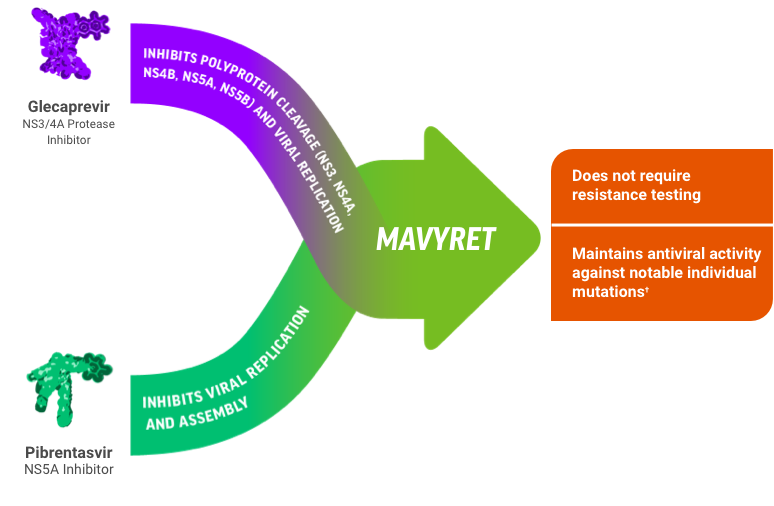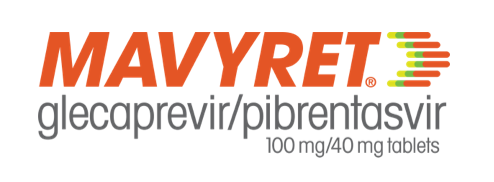POTENT PROTEASE INHIBITOR & NS5Ai COMBINATION* DESIGNED TO STOP VIRAL REPLICATION1,2


- Glecaprevir, an NS3/4A protease inhibitor1
- Inhibits polyprotein cleavage (NS3, NS4A, NS4B, NS5B) and viral replication
- Pibrentasvir, an NS5A inhibitor1
- Inhibits viral replication and assembly
- Glecaprevir and pibrentasvir are the two main components of MAVYRET1
- Does not require resistance testing2
- Maintains antiviral activity against notable individual mutations1
*Potency of antiviral activity is often measured using EC50 values determined by in vitro studies. The median EC50 values against the common subtypes of HCV GT 1-6 were 0.08-4.6 nM for glecaprevir and 0.5-15.6 pM for pibrentasvir.1
†RESISTANCE1
Glecaprevir: Individual amino acid substitutions associated with resistance to other HCV protease inhibitors at positions 36, 43, 54, 55, 56, 155, 166, or 170 in NS3 generally did not reduce susceptibility to glecaprevir. Individual substitutions at NS3 position D/Q168 had varying effects on glecaprevir susceptibility depending on HCV genotype/subtype and specific amino acid change, with the greatest reductions (>30-fold) observed in GT 1a (D168F/Y), 3a (Q168R), and 6a (D168A/G/H/V/Y). An NS3 Q80R substitution in GT 3a caused a 21-fold reduction in glecaprevir susceptibility, while Q80 substitutions in GT 1a and 1b (including GT 1a Q80K) did not reduce glecaprevir susceptibility.
Pibrentasvir: The majority of individual amino acid substitutions associated with resistance to other HCV NS5A inhibitors at positions 24, 28, 30, 31, 58, 92, or 93 in NS5A did not reduce susceptibility to pibrentasvir. Individual NS5A amino acid substitutions that reduced susceptibility to pibrentasvir included M28G or Q30D in a GT 1a replicon (244- and 94-fold, respectively), and P32-deletion in a GT 1b replicon (1036-fold). In a GT 3b replicon, the presence of naturally occurring polymorphisms K30 and M31 in NS5A reduced susceptibility to pibrentasvir by 24-fold relative to the activity of pibrentasvir in a GT 3a replicon. Introduction of an NS5A Y93H substitution into a GT 3b replicon further reduced susceptibility to pibrentasvir by 6336-fold.
